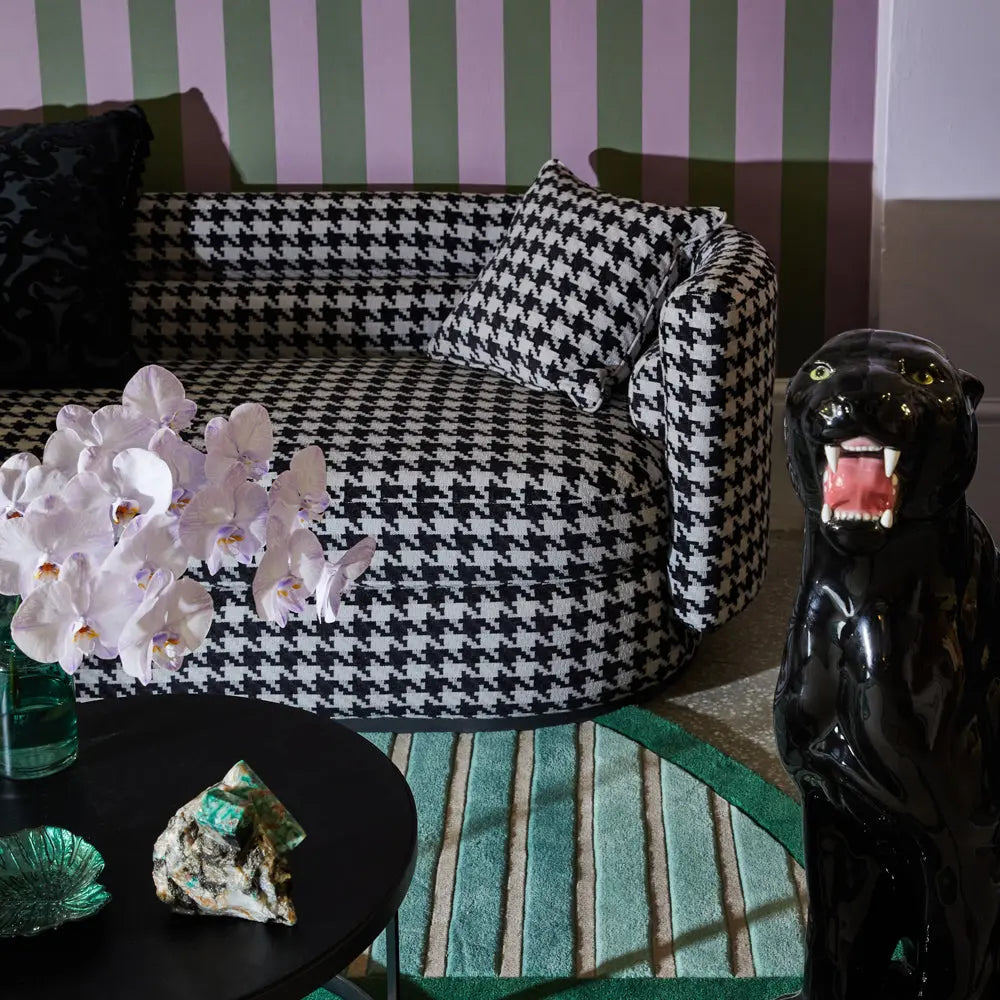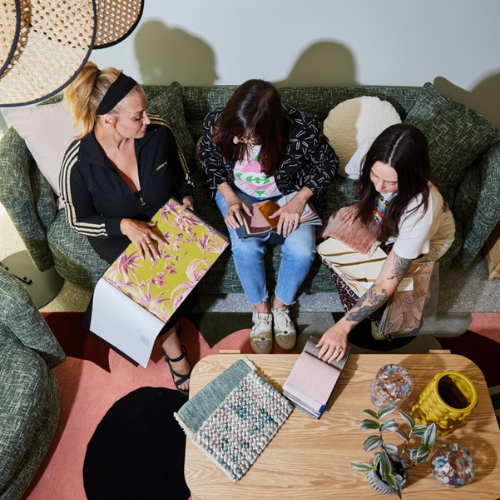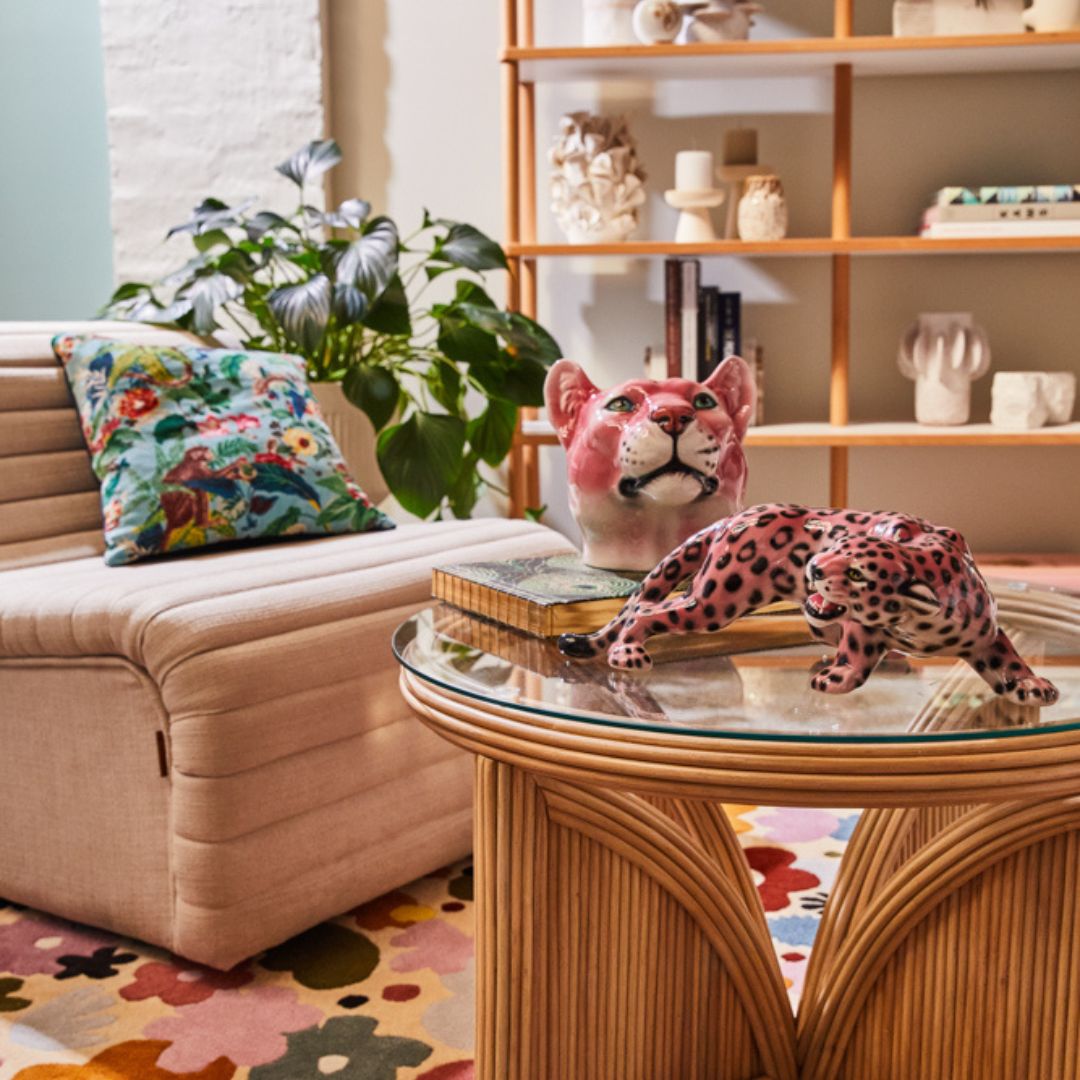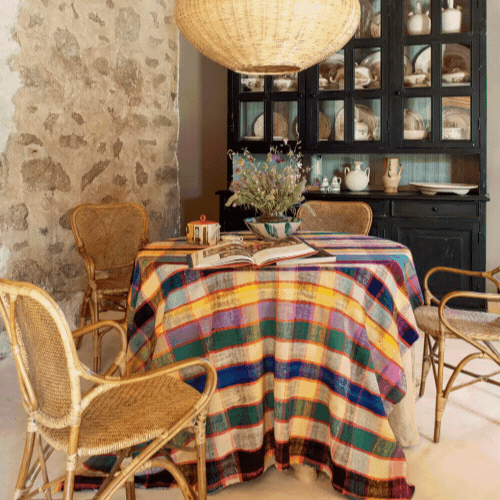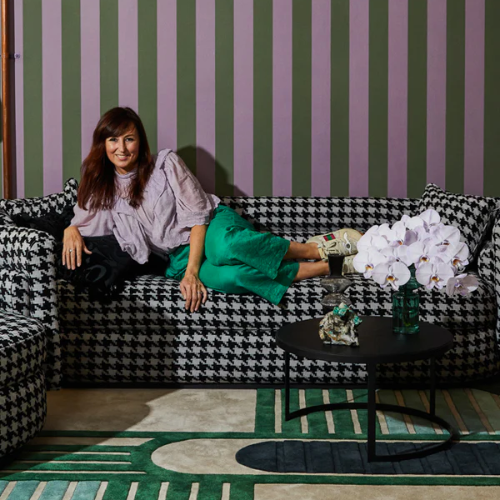When we think of a material that is sensual or seductive, soft, silky and lush, we think of velvet fabric. Although modern designs have drifted towards crisp colours and lines, a craving for comfort and class has remained, so the desire for velvet is a constant.
Tactile to the touch, velvet has been a favourite for many years in many sophisticated and glamourous circles, from aristocrats to celebrities, furniture to fashion. It is distinctive yet versatile, opulent but accessible, so it could look as much at home in a plush palace as it would on a suburban porch.
So, read on to learn more about the rise and rise of velvet – from its noble heritage and pop culture connections, to variations, care, and common uses today...
Royal Roots
The history of velvet is as versatile as the fabric itself. It has Middle Eastern origins as far back as 400 B.C - specifically found in regions of China, Egypt and Iraq - making these countries among the first unofficial manufacturers of velvet fabric. Europeans then introduced it as a trade commodity along the Silk Road, and the Italians were the first to establish a fully-fledged velvet industry.
In Western culture, however, we strongly associate velvet with noble heritage and formal imperial attire, having been a significant status symbol at the time. You only have to watch an episode of any period drama or royal documentary to notice velvet lined this or velvet draped that, with Kings in velvet robes, their Queens in velvet dresses. In 1399, King Richard II of England directed in his will that his body was to be clothed “in velveto”, and it was rumoured that Henry VIII even lined his toilet in velvet. At one-point, blue velvet was reserved solely for use by the French king, his family, and favoured subjects.
It was not until the Renaissance period that production was at its peak, and velvet was used for clothing and furniture upholstery. From the Industrial Revolution to the Edwardian era, velvet became even more widely available. It was a common feature of the royal and the rich, the famous and the fashion-conscious, who started decking out their living rooms, bedrooms and wardrobes.
In modern times, velvet is still very much a fashion favourite with the royals, from the late Princess Diana to the Duchesses of Cambridge (Kate) and Sussex (Meghan), and even Prince's Charles, William and Harry. And who can forget that time little Prince George wore a bathrobe and navy velvet slippers to meet The Obamas!

Velvet Fabric Fashion (On The Stage & Screen)
Velvet has been a feature of pop culture for many decades, from celebrities and catwalks to hippies in kimonos, miniskirts, dresses, bell bottoms and blazers. From the band Velvet Underground to the Alannah Myles song 'Black Velvet', many in the music industry have coveted the cool cloth.
In the late 60s to early 70s, British bands adopted the dandy style, with the likes of The Rolling Stones and The Who sporting velvet. Then Stevie Nicks was draped in it, ABBA were wearing jumpsuits made of it, and US rockers Aerosmith pulled on flares and cape versions of it. David Bowie favoured the fabric, especially during his Ziggy Stardust era (even putting it in a song, ‘Velvet Goldmine') and guitar virtuoso Jimi Hendrix often wore many different coloured velvet ensembles.
Luxe red velvet seats are a common sighting in cinemas, but the fabric has been immortalised on the people of film and television too. In TV's Doctor Who, two so far have donned dapper and debonair velvet: the 3rd Doctor (Jon Pertwee) in a moss green smoking jacket, and the 12th Doctor (Peter Capaldi) in a silk-lined, rich burgundy red blazer. Aptly reminiscent of the Cadbury colour, Gene Wilder's iconic Willy Wonka costume included a fetching purple velvet frock coat, paired with a bowtie and top hat.
Nowadays, artists are still slipping on sensual, statement velvet suits (think Harry Styles dressed to impress and caress in that cobalt-blue Gucci suit!)

Velvet vs Velour
Speaking of touch, it's often difficult to feel the difference between something that is velvet or velvet-like. Despite being almost indistinguishable to the naked eye too, velvet and velour are two separate fabrics. They both have a plush, smooth and tactile texture known as ‘pile' (achieved by cutting across looped threads with a special weaving process) however, they are composed of different fibres.
Velvet is not a type of fibre itself, but actually several layers of fabric that have been woven together. In its more expensive, early days, it was made from 100% silk, but now it's more likely to be acetate or rayon. Despite a very similar luxurious finish, velour is typically made from knitted cotton or polyester.
Much like rattan and wicker, velvet and velour aren't interchangeable in their makeup, but the end result is very similar.
Not So High-Maintenance
Despite its lavish looks, velvet fabric isn't as difficult to keep clean as you might think. Where velvet clothing is concerned, key dos and don'ts include hanging items up and never touching them with an iron (it's best to steam any stubborn wrinkles out).
To give velvet furniture a longer lifespan, a regular cleaning routine is recommended, which can be as easy as using a vacuum nozzle to blow off dust and dirt built up in creases and corners.
In the case of spills and stains, velvet can be pre-emptively safeguarded with a fabric protector, or if there's already been an accident, blotting the area with a clean, dry and absorbent cloth can do the trick.
Bear the colour of your velvet fabric in mind too. If you've got bright or richly pigmented velvet furniture in the house near a window, or on the front or back veranda, it's best to keep it out of direct sunlight to avoid fading and a premature loss of lustre.

Velvet Varieties
Velvet fabric has come a long way from its solely silk origins. Although it has retained its sophisticated style and beloved feel, it is now a form of attainable luxury and can come in a wide range of styles and surfaces.
Velveteen is heavy, with matte, suede look about it. Crushed or panne velvet is rustic and crumpled, achieved by twisting the fabric while wet, or when heavy pressure is applied to push the pile in one direction. Corduroy is sturdy with ribbed vertical lines, and stretch velvet has spandex incorporated in to the weave (making it good for dance and sport uniforms likes leotards and trackpants). Other varieties include ciselé or patterned velvet, embossed velvet and textured velvet.
Velvet clothing and furniture are its most popular and common uses, as well as interior design accessories likes curtains and throws. Soft sheened velvet in pastel pink, purple and blue hues have become a staple in bohemian abodes, whilst bold colours like red, orange and green have become firm favourites in mid-century or modern style homes. From Scandinavian chic to eclectic, and everything in-between, there's a place for velvet fabric almost anywhere.
Velvet can be used to break up or introduce new shapes and spaces, and balance the colours and textures of a room. A dark coloured and solid structure of velvet furniture can ground or glamourise a room, whilst a pale and delicate piece can bring light and air to an otherwise dingy space.

Our Velvet Furniture Range
In true trend style, velvet has weaved its way in and out of the world of interior design. From the wall-to-wall ornate drawing rooms of the posh and privileged, to the comfortable and cosy furniture of everyday families, velvet's ability to adapt and assimilate into its surroundings is impressive.
Here at Family Love Tree, we stock many varieties of velvet for your plush pleasure, from large upholstered items to poufs, pillowcases, beanbags and cushions. Our range runs the gamut of 80s postmodern styles, colours and moods, from dark forest greens and rich plums, to warm mustards and soft lilacs.
The Parker Range in particular boasts an attractive array of uniquely sumptuous and voluptuous velvet furniture, including adorable, chunky cube couches and armchairs, art deco disco headboards and bases, and curved ottomans (in smooth or textured velvet). Pieces back by popular demand include our range of modernist Medusa Dining Chairs (including brand new colours of cream, peach and amber) and the Curve 3-Seater Lounge in Petrol Blue.
So, if you're after a touch of glamour in your home, be sure to browse our full range of velvet fabric furniture.


